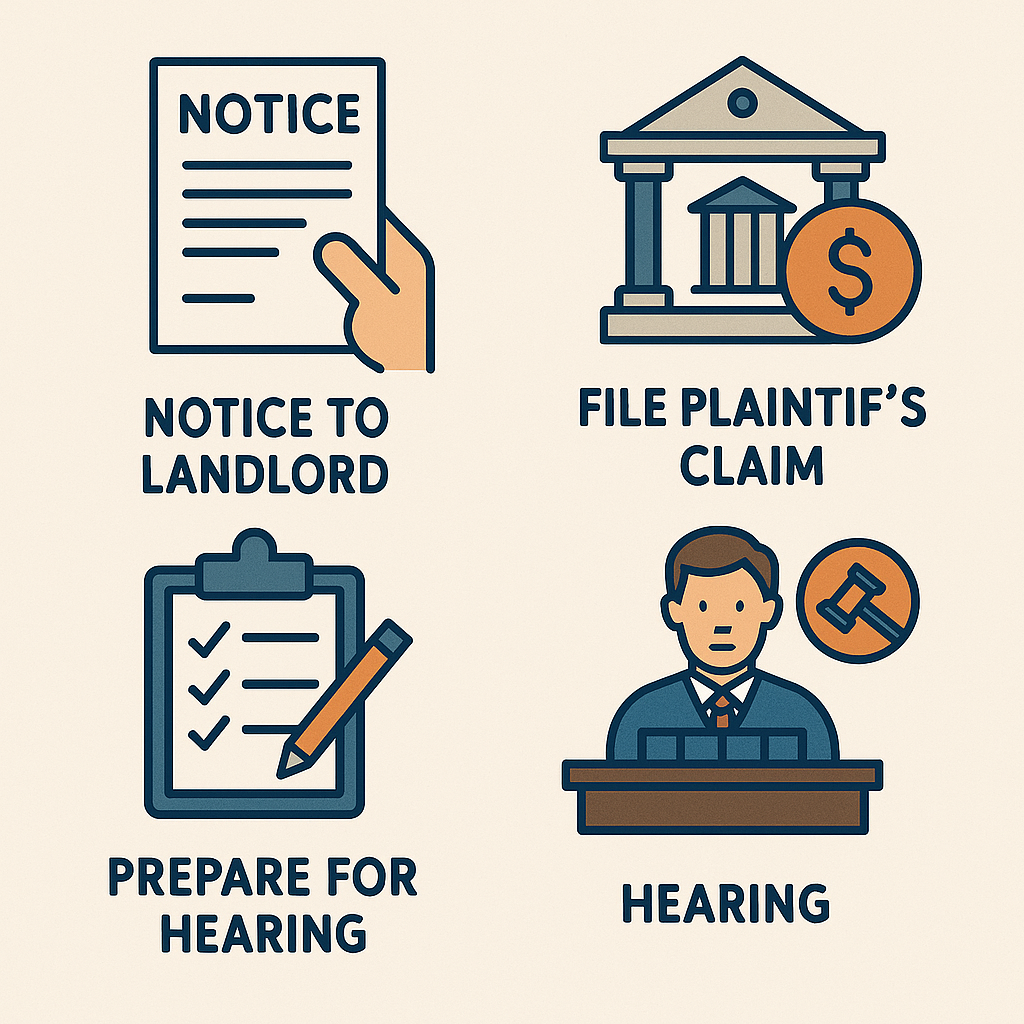Utah Small Claims for Deposits or Damages Exact Steps to File, Serve, and Win
A plain-English roadmap for Utah tenants and landlords on deposits, damages, filing, service, evidence, hearings, and collection
Utah Law Explained shows how to use small claims court when a landlord keeps your deposit or charges unfair damages. Utah’s process is designed to be simple and accessible without an attorney. You only need the right forms, deadlines, and prep.
This guide covers qualification, forms, where to file, proper service, evidence prep, what happens at the hearing, and what a judgment means. You will also see how to collect if you win and what to consider if you lose. This page is legal information, not legal advice.
Is It Small Claims?
Deposit and damage disputes almost always fit small claims. Confirm these basics first.
Jurisdiction Limit
As of January 2025, Utah small claims courts handle up to $20,000. Most deposit or damage disputes fall under this cap.
Type of Case
Use small claims for straightforward money disputes like unpaid deposits, excessive damage charges, or repair costs.
Not Eligible
If you want the court to force repairs or take non-money action, that is outside small claims.
File
Start the case with the proper form in the proper court and pay the correct fee.
Check the amount you are claiming and attach a simple damages ledger. If you qualify for a fee waiver, submit it at filing to avoid delays.
Serve
Who Can Serve
Tips for Smooth Service
Common Mistakes
Prepare Evidence
Judges rely heavily on organized, timestamped evidence. Build a clean packet.
Core Documents
Lease agreement, a copy of your demand letter with mailing receipts, and all written communications.
Photos and Video
Move-in and move-out photos or video, labeled and dated. Side by side comparisons help.
Money Proof
Invoices or estimates for real repair costs and a clear itemization of claimed amounts.
Organization
Use a short index, page numbers, and tabs. Bring two sets – one for you and one for the landlord or judge.
Hearing
Hearings are informal compared to higher courts. You will present your story and documents concisely.
Setting
Each side tells their story, shows evidence, and answers the judge’s questions. Stay calm and stick to facts.
Focus Points
Normal wear and tear vs. real damage, notice and timelines, itemized deductions, and proof of costs.
Presentation
Use your index to move fast. Show before and after photos and the dollar link to each deduction.
Judgment and Collection
Winning is step one. Getting paid may require action.
If You Win
If You Lose
Enforcement Mindset
Video and Social Learning Hub
Key Takeaways
Confirm you are under $20,000 and seeking money only – then file in the county of the rental.
Serve properly within 120 days and bring organized, timestamped evidence for deposits and damages.
Winning is step one – plan for collection with wage garnishment or bank levy if needed.
This page is legal information, not legal advice. When in doubt, get counsel before you file.
Next Step
Ready to act – gather your documents, fill out the Affidavit and Summons, and plan service. A short consult can prevent mistakes and delays.
Book a Small Claims ConsultWe will help you confirm eligibility, organize evidence, and understand filing, service, hearing day, and collection.
